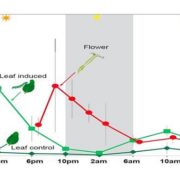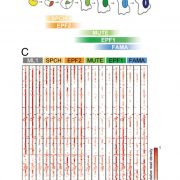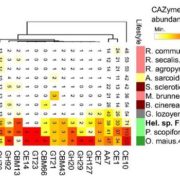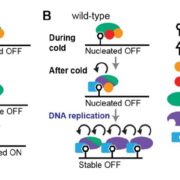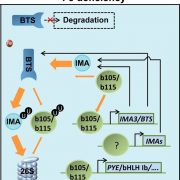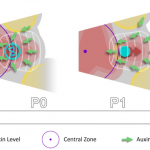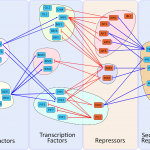Nutrient dose-responsive transcriptome changes driven by Michaelis–Menten kinetics underlie plant growth rates (PNAS)
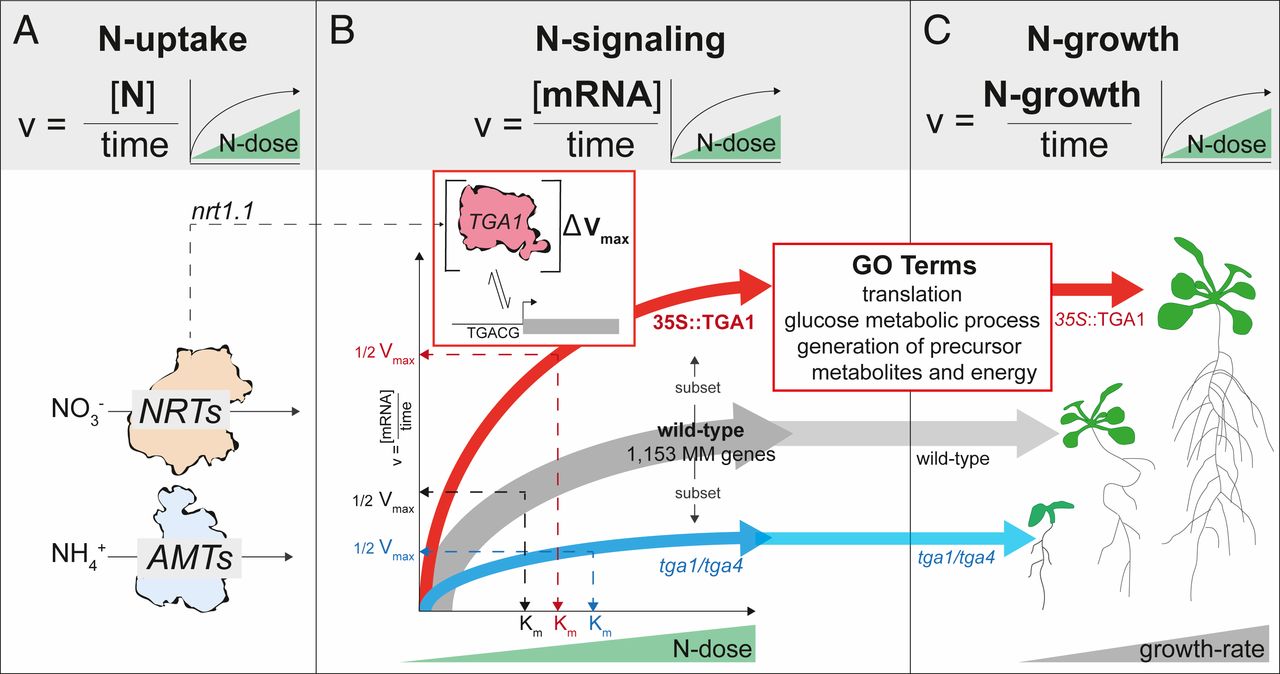 Plants can increase their growth and biomass proportionately to an increase in nutrient dose and, conversely, their growth is limited by limiting nutrients. In this study, Swift et al. explored the molecular underpinnings of the nutrient dose-response phenomenon. The authors first show that nitrogen-dose affects the rate of transcript change genome-wide in Arabidopsis. They showed that this dose-responsive gene expression pattern follows the Michaelis-Menten (MM) kinetics model. However, this relationship is not linear because at higher doses of nitrogen there was a diminishing effect on the rate at which genes were induced or repressed. Since transcription factors largely controls gene expression, the authors reason that transcription factors could be acting as a catalyst driving the rate of transcript change in response to nitrogen-dose. The authors identified three transcription factors; LBD37/38 and TGA1 as candidate transcriptional regulators of the nitrogen-dose response. They looked for cis-regulatory elements overrepresented in the promoter of genes whose transcript change in response to nitrogen-dose follow the MM model and found that the TGA1 binding site was overrepresented. In addition, those genes are also preferentially expressed in the root pericycle and stele where TGA1 itself is expressed. Using knock out mutants and overexpression lines, they showed that TGA1 levels mediate accelerated Arabidopsis growth rates in response to nitrogen dose. (Summary by Toluwase Olukayodo @toluxylic) Proc. Natl. Acad. Sci. USA
Plants can increase their growth and biomass proportionately to an increase in nutrient dose and, conversely, their growth is limited by limiting nutrients. In this study, Swift et al. explored the molecular underpinnings of the nutrient dose-response phenomenon. The authors first show that nitrogen-dose affects the rate of transcript change genome-wide in Arabidopsis. They showed that this dose-responsive gene expression pattern follows the Michaelis-Menten (MM) kinetics model. However, this relationship is not linear because at higher doses of nitrogen there was a diminishing effect on the rate at which genes were induced or repressed. Since transcription factors largely controls gene expression, the authors reason that transcription factors could be acting as a catalyst driving the rate of transcript change in response to nitrogen-dose. The authors identified three transcription factors; LBD37/38 and TGA1 as candidate transcriptional regulators of the nitrogen-dose response. They looked for cis-regulatory elements overrepresented in the promoter of genes whose transcript change in response to nitrogen-dose follow the MM model and found that the TGA1 binding site was overrepresented. In addition, those genes are also preferentially expressed in the root pericycle and stele where TGA1 itself is expressed. Using knock out mutants and overexpression lines, they showed that TGA1 levels mediate accelerated Arabidopsis growth rates in response to nitrogen dose. (Summary by Toluwase Olukayodo @toluxylic) Proc. Natl. Acad. Sci. USA
[altmetric doi=”10.1073/pnas.1918619117″ details=”right” float=”right”]


